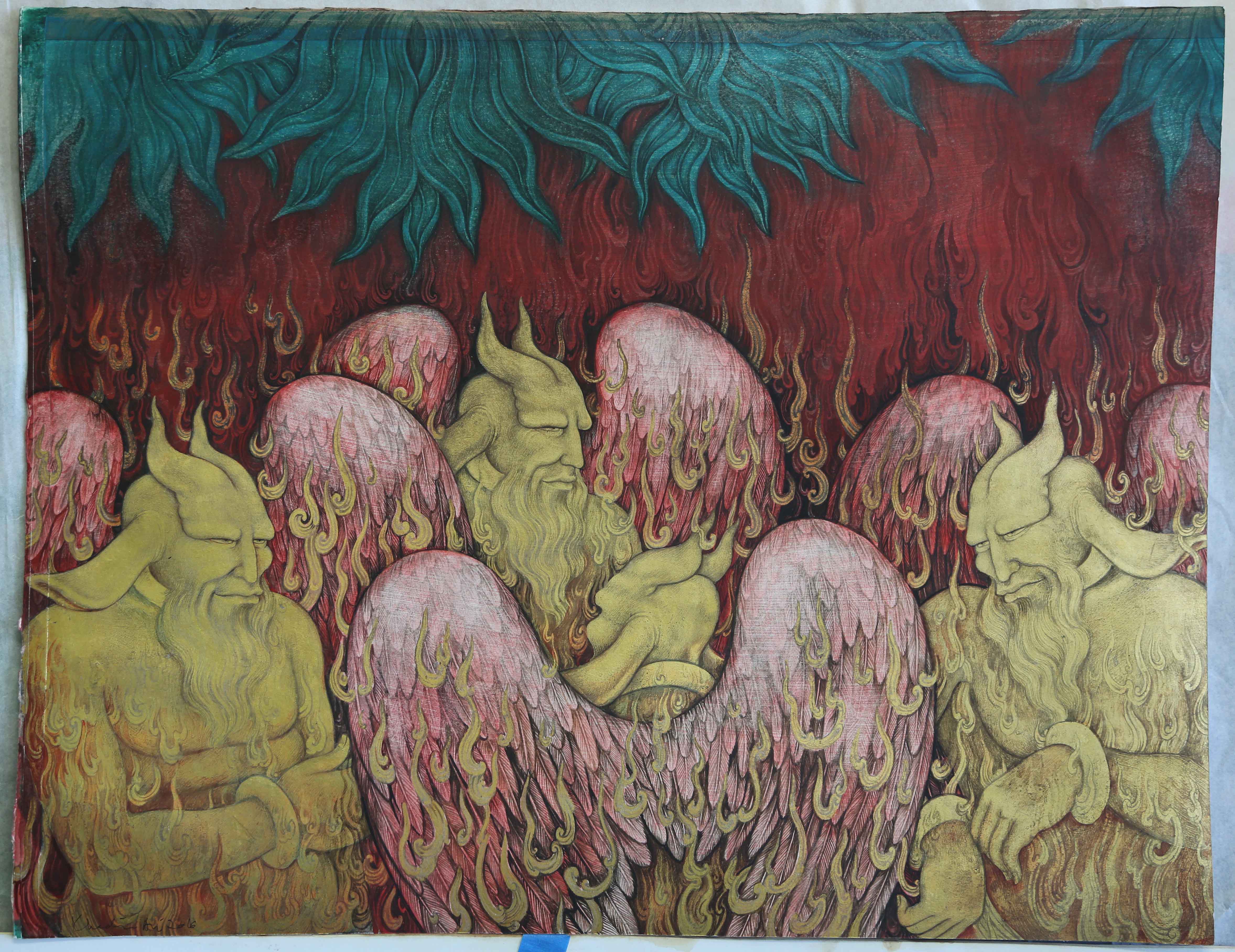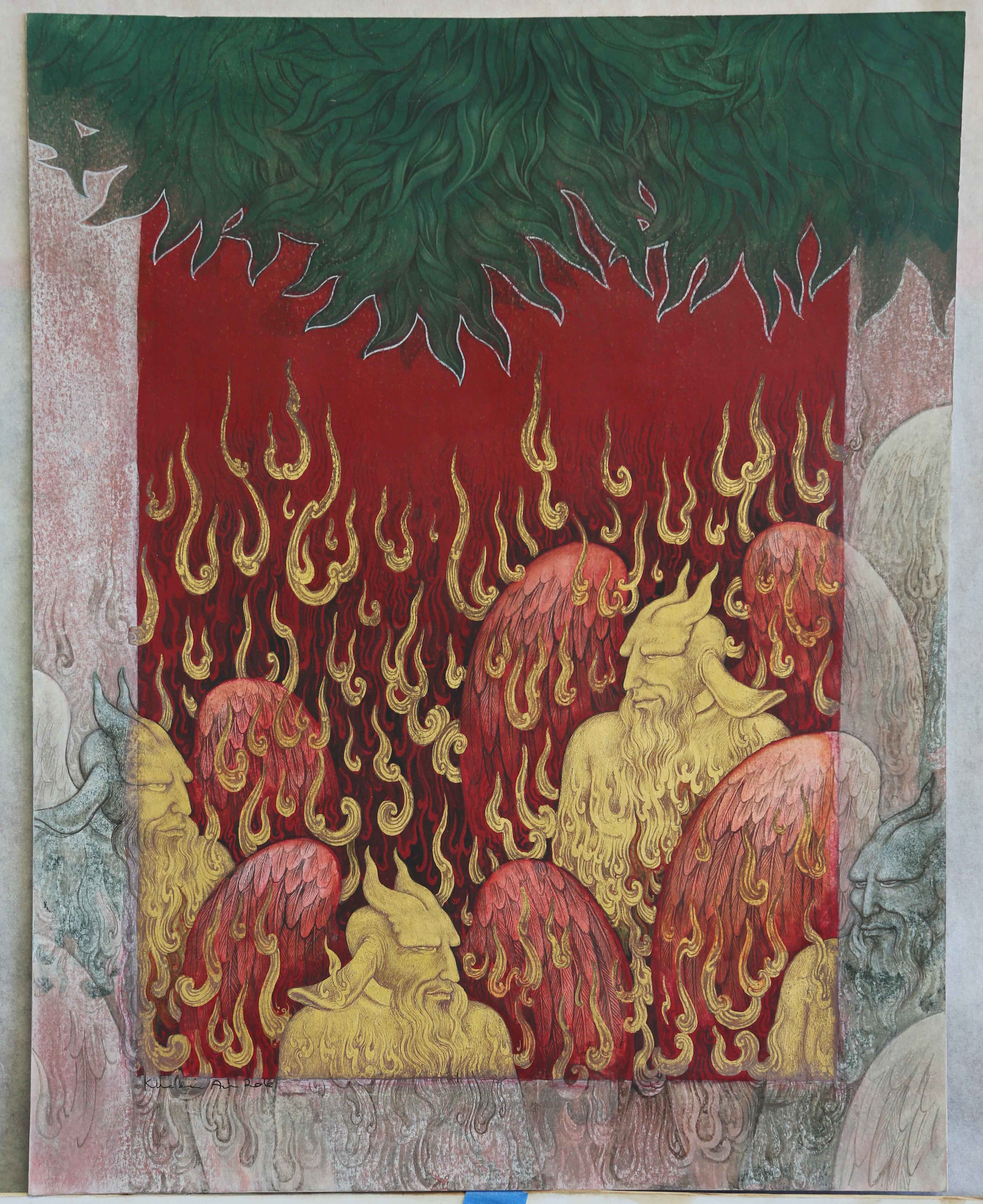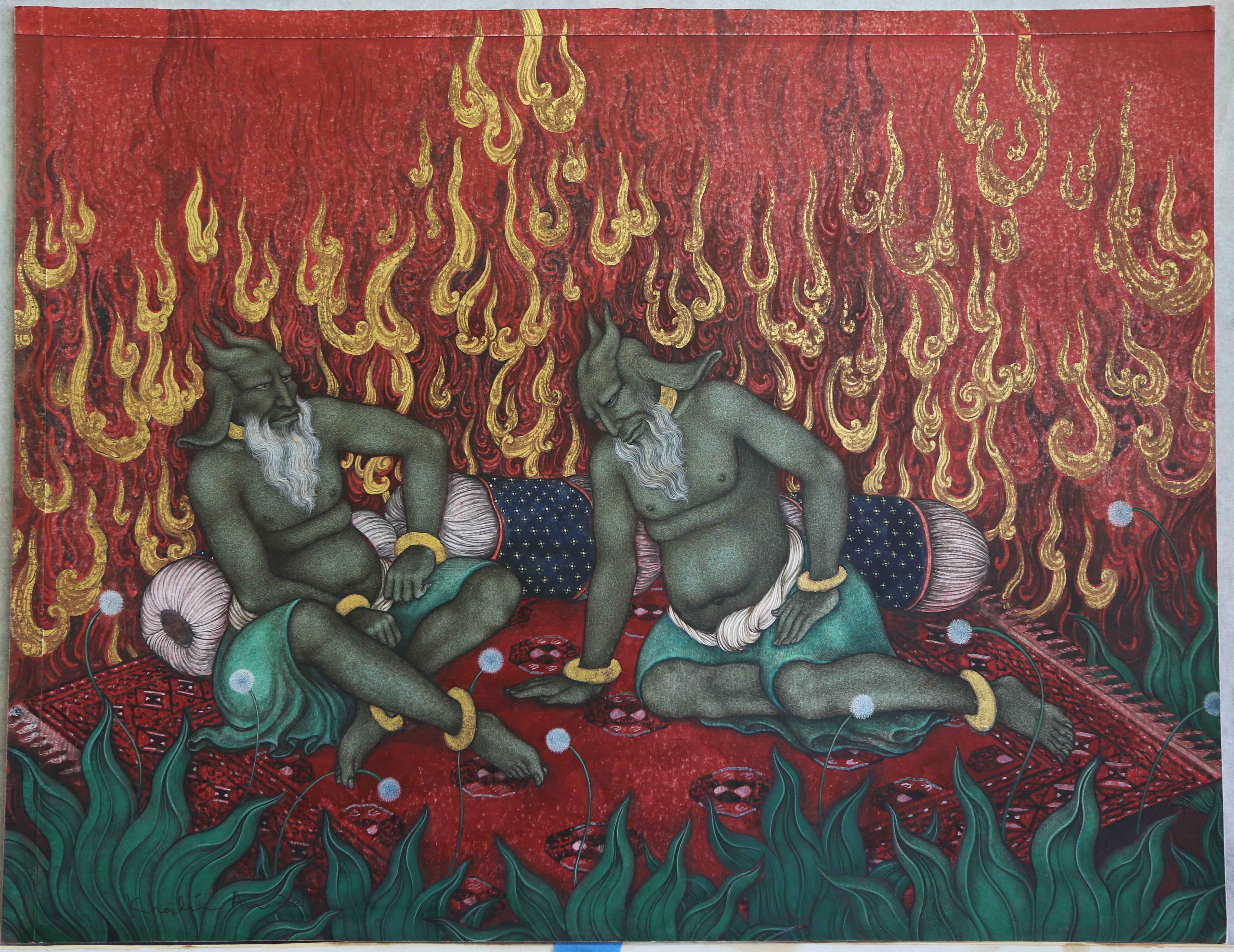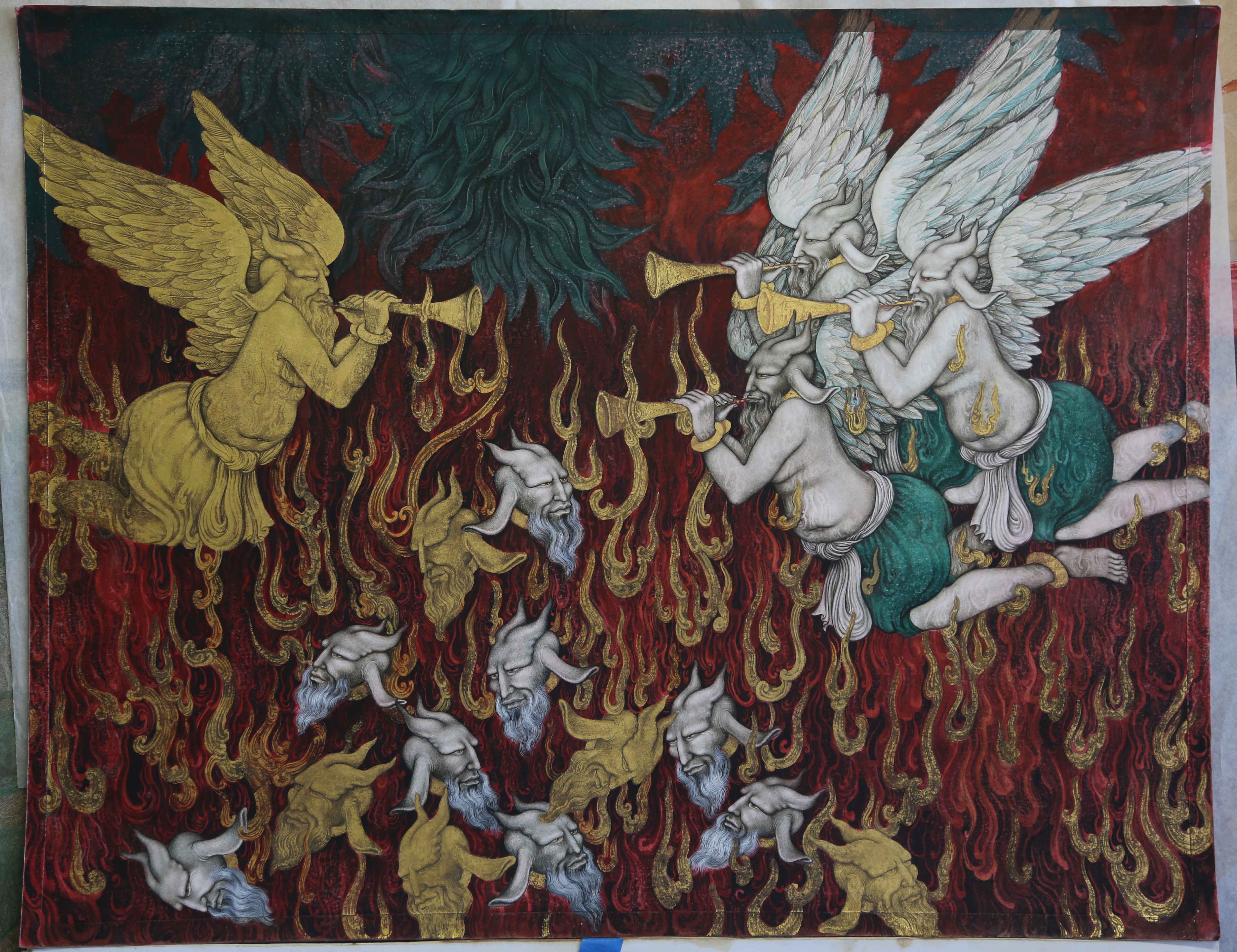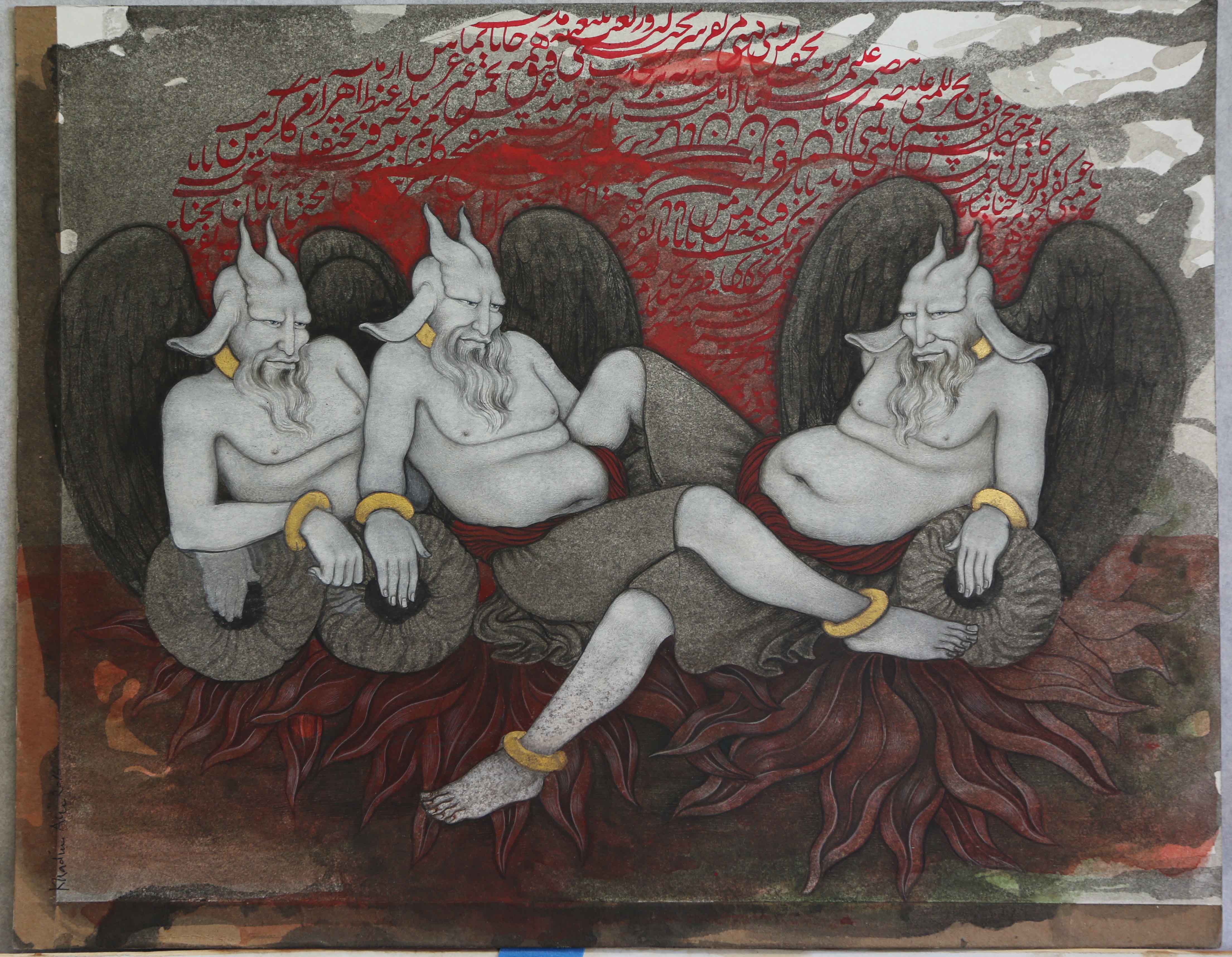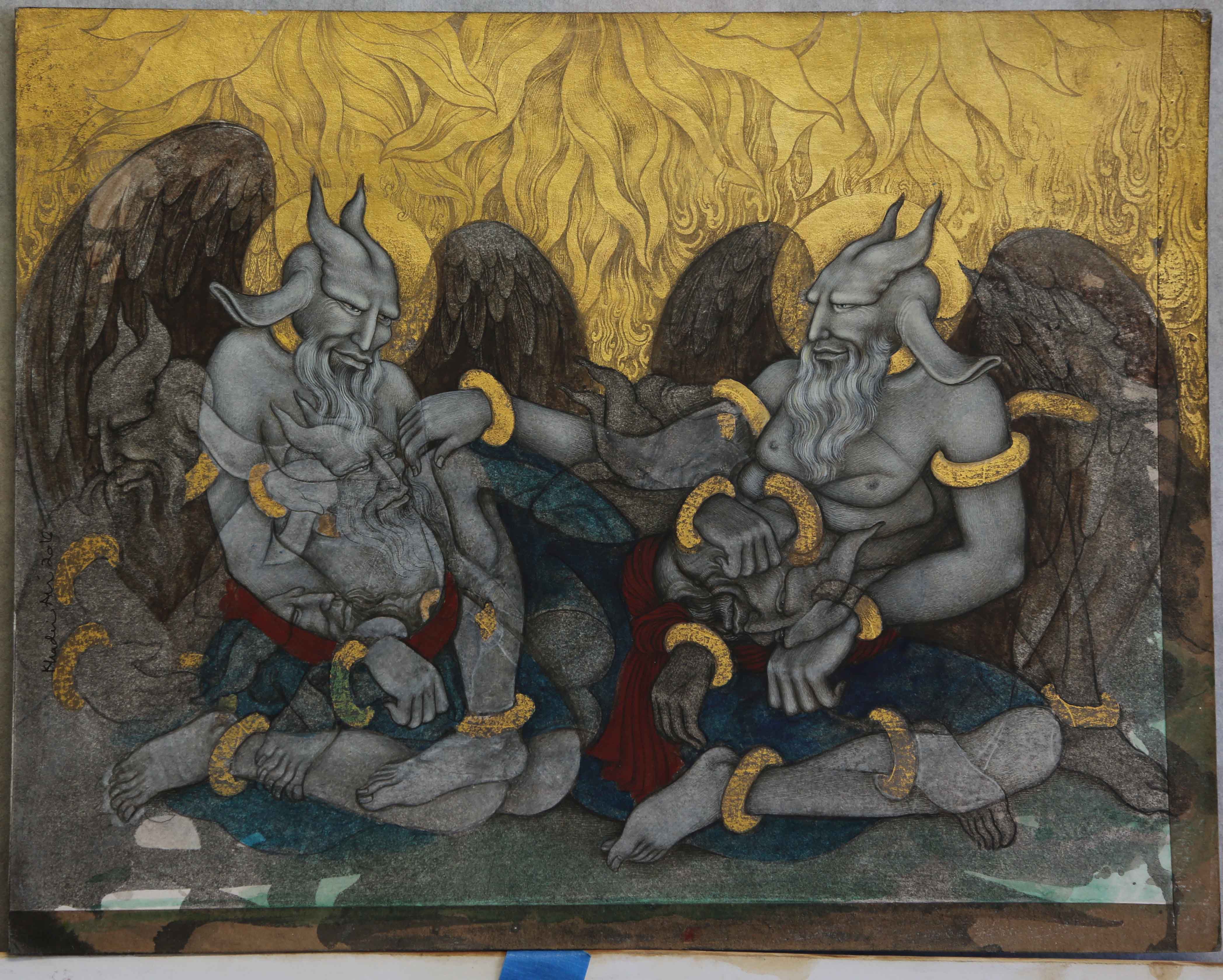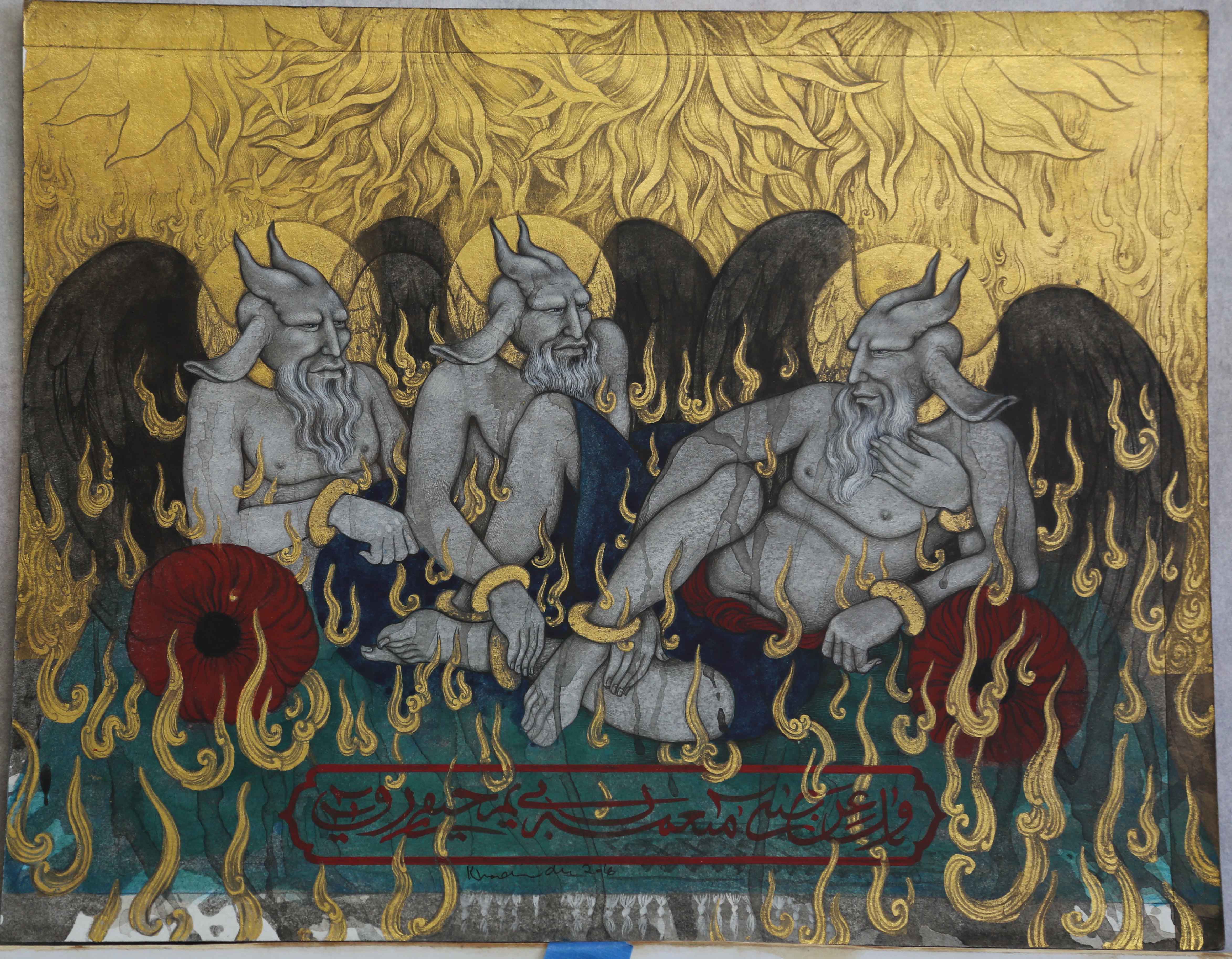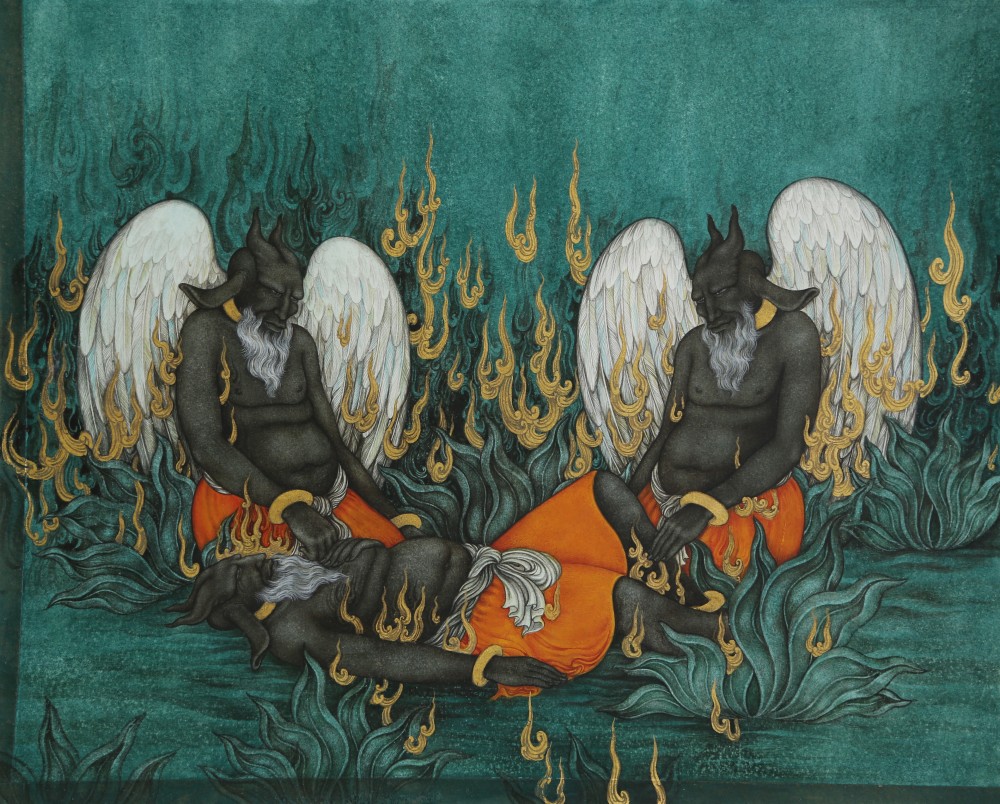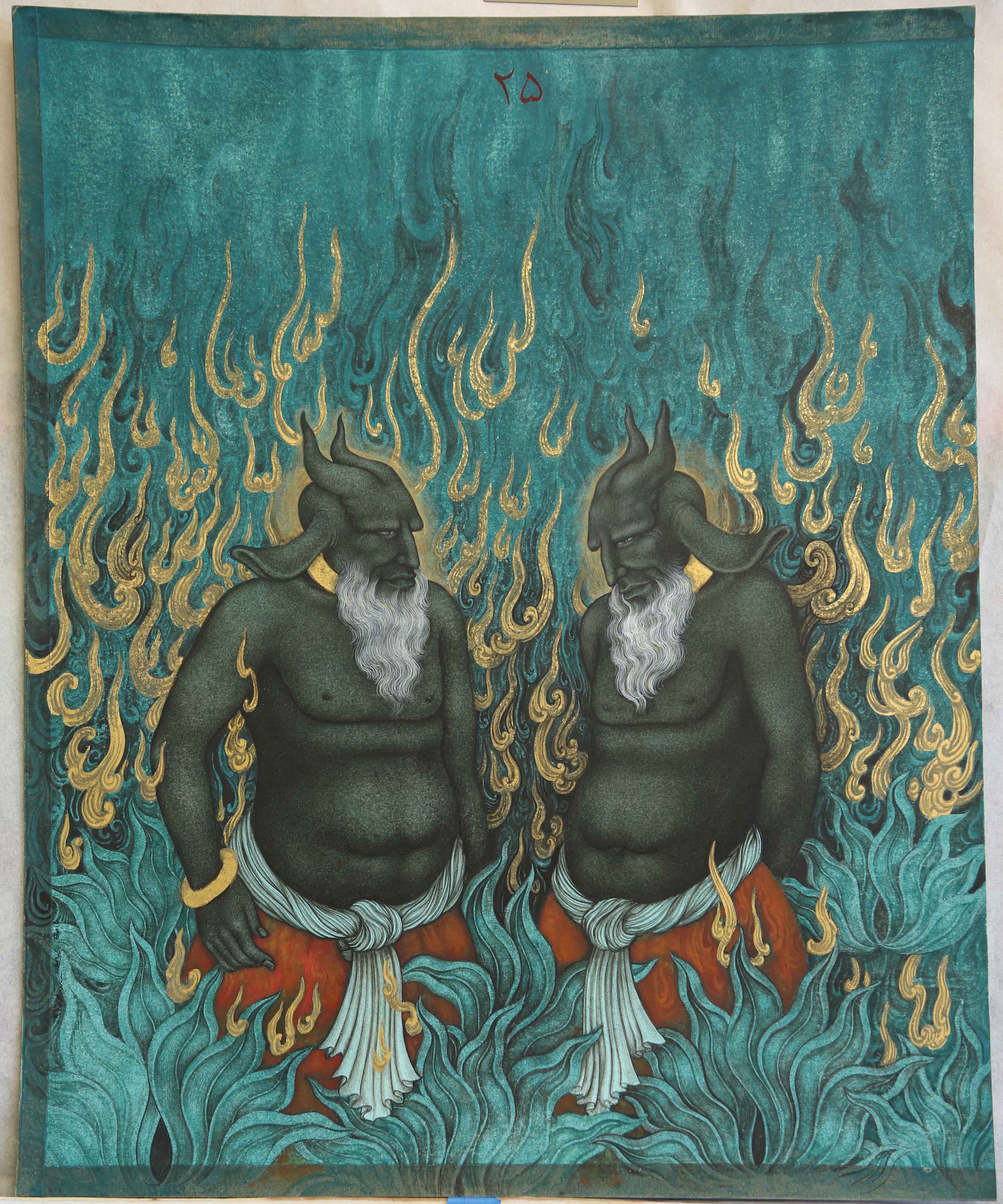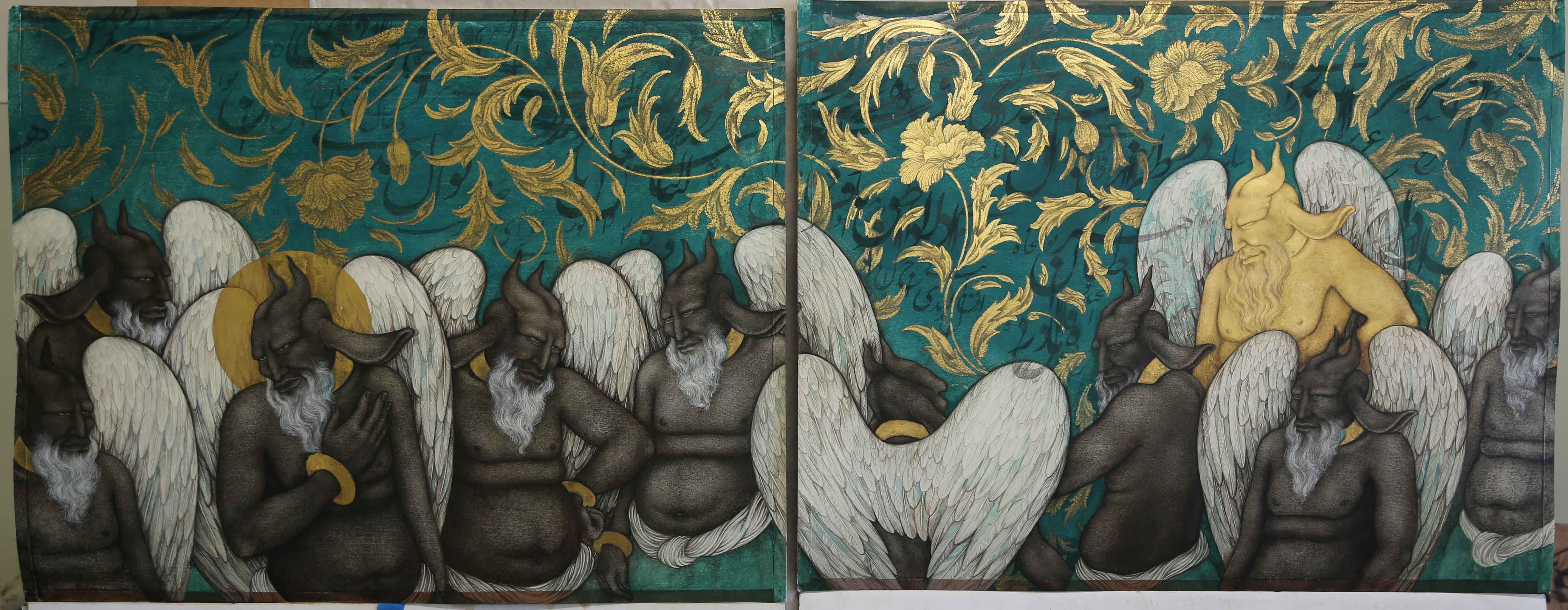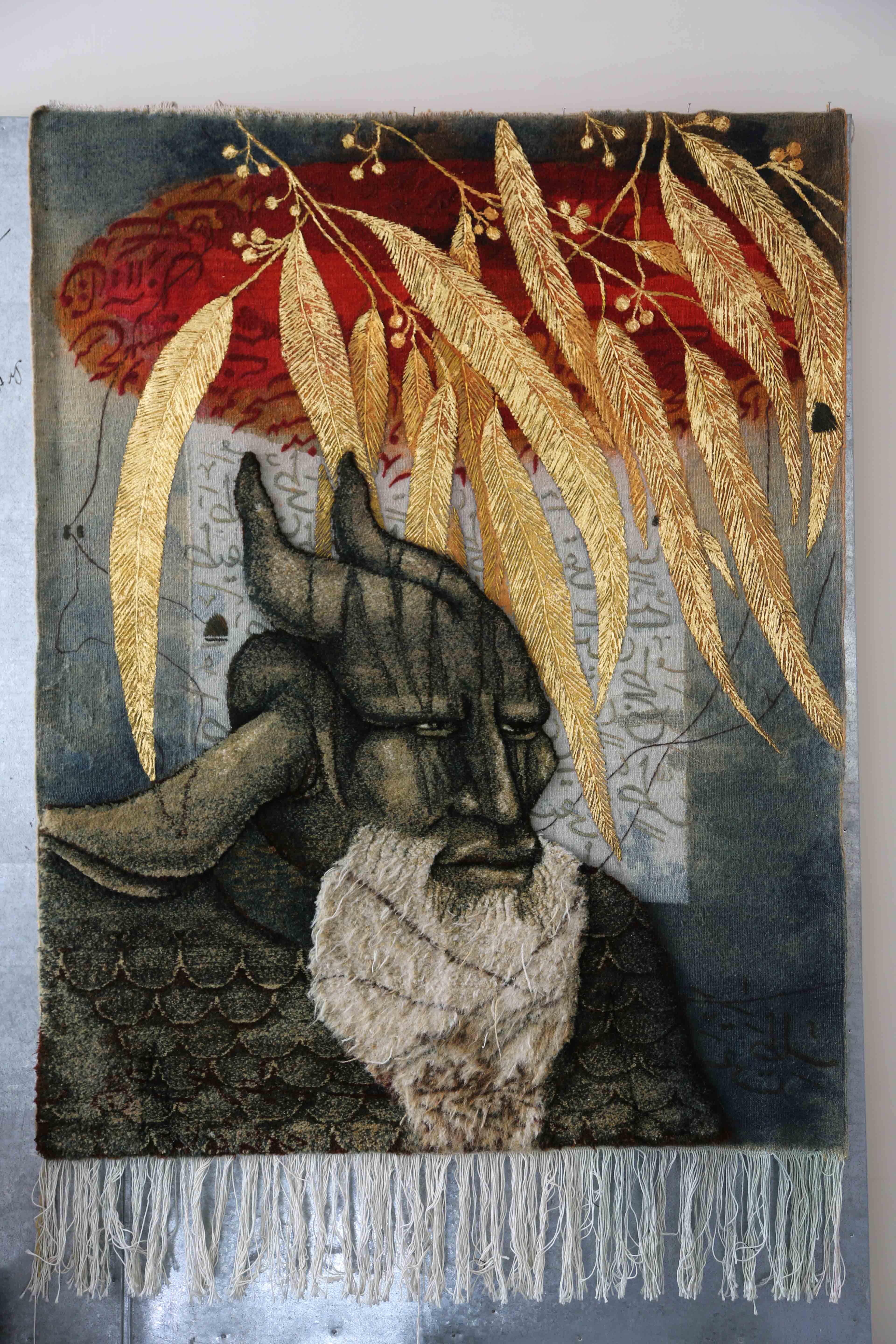Forlorn Foe
Sep 29, 2016 - Oct 29, 2016
- SELECTED WORKS
- CURATORIAL NOTE
- INVITE
- PRESS RELEASE
- DOWNLOAD CATALOGUE
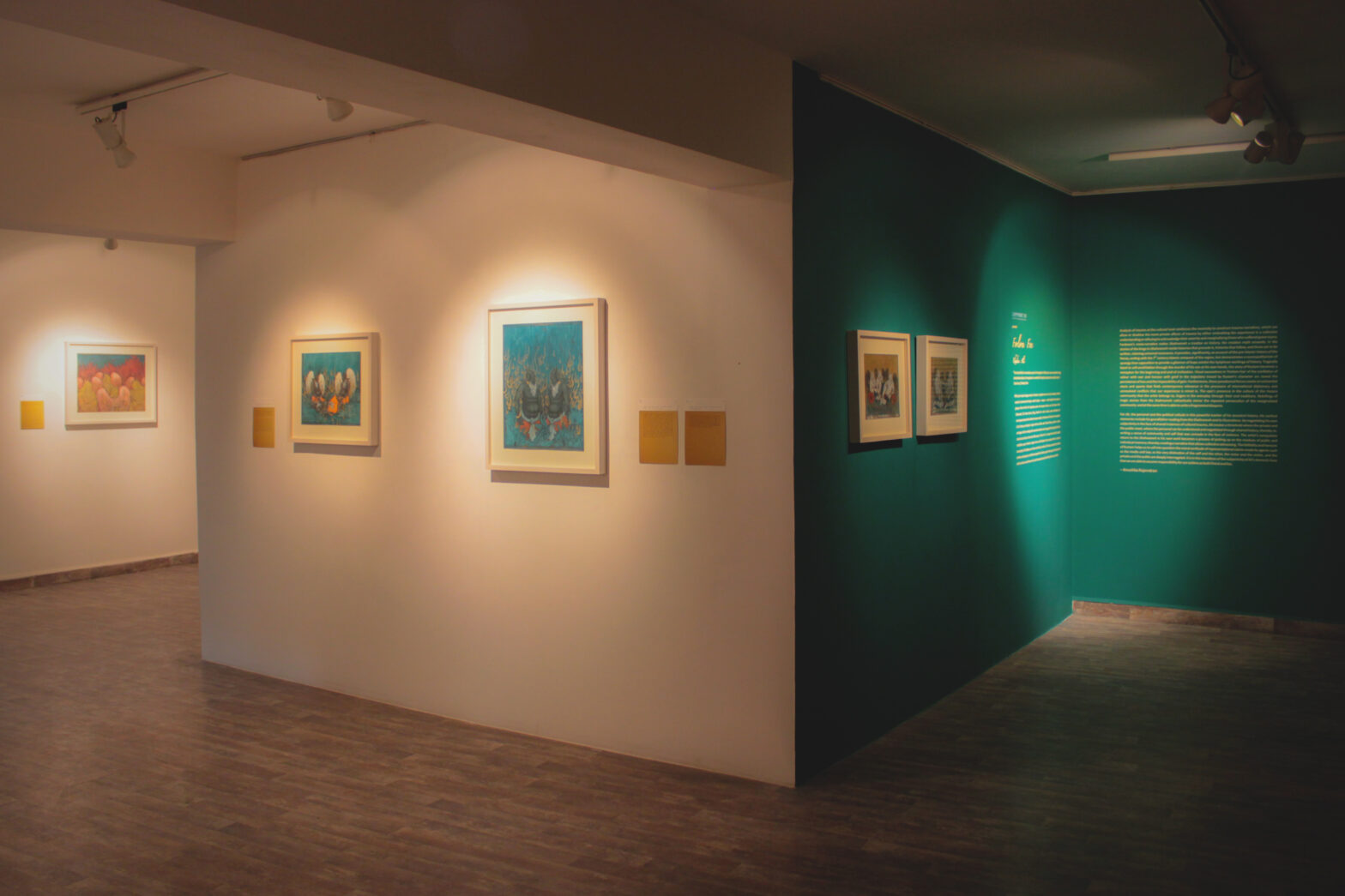
“The only state that is as anomalous as pain is the imagination. While pain is a state remarkable for being wholly without objects, the imagination is remarkable for being the only state that is wholly its objects.” – Elaine Scarry, The Body in Pain
While pain escapes language except in metaphors, imagination comes to its aid, endowing it with the capacity to communicate through a world of objects — weapons — and the adjectives they allow. In glimpses from the life of the legendary warrior and conqueror Rustam, one of the heroes of the Shahnameh, The Persian Book of Kings, Khadim Ali is able to realize a poetic manifestation of contemporary traumas that continue to escape resolution. The endurance of this epic in the imagination of the history and identity of regions that have fallen under Persian influence, provides a cultural archetype. And its re-reading is able to provide articulation when language fails the ongoing historical and cultural crises that our times have fallen prey to. ‘Forlorn Foe’ is a chapter from the artist’s repeated meditations upon Ferdowsi’s original verses and illustrations that accompanied them in subsequent manuscripts. Ali’s delicate use of colour and detail, an evidence of his deep connection to the miniature tradition and tapestry, to craft demonic apparitions of Rustam, point to the capacity of the abject and the sublime to be one and the same in art, and consequently aesthetic affinity with his source material.
CURATORIAL NOTE
“The only state that is as anomalous as pain is the imagination. While pain is a state remarkable for being wholly without objects, the imagination is remarkable for being the only state that is wholly its objects.” – Elaine Scarry, The Body in Pain
While pain escapes language except in metaphors, imagination comes to its aid, endowing it with the capacity to communicate through a world of objects — weapons — and the adjectives they allow. In glimpses from the life of the legendary warrior and conqueror Rustam, one of the heroes of the Shahnameh, The Persian Book of Kings, Khadim Ali is able to realize a poetic manifestation of contemporary traumas that continue to escape resolution. The endurance of this epic in the imagination of the history and identity of regions that have fallen under Persian influence, provides a cultural archetype. And its re-reading is able to provide articulation when language fails the ongoing historical and cultural crises that our times have fallen prey to. ‘Forlorn Foe’ is a chapter from the artist’s repeated meditations upon Ferdowsi’s original verses and illustrations that accompanied them in subsequent manuscripts. Ali’s delicate use of colour and detail, an evidence of his deep connection to the miniature tradition and tapestry, to craft demonic apparitions of Rustam, point to the capacity of the abject and the sublime to be one and the same in art, and consequently aesthetic affinity with his source material.
Analysis of trauma at the cultural level reinforces the necessity to construct trauma narratives, which can allow or disallow the more private affects of trauma by either embedding the experience in a collective understanding or refusing to acknowledge their severity and marginalizing those who suffered grave injury. Ferdowsi’s meta-narrative makes Shahnameh a treatise on history, the creation myth onwards. In the stories of the kings in Shahnameh reside histories that precede it, histories that follow, and those yet to be written, claiming universal resonance. It provides, significantly, an account of the pre-Islamic history of the Persia, ending with the 7th century Islamic conquest of the region, but demonstrates a cosmopolitanism of synergy than opposition to provide a glimmer of hope amidst the Sysiphean workings of history. Tragically fated to self-annihilation through the murder of his son at his own hands, the story of Rustam becomes a metaphor for the beginning and end of civilization. Visual excavations in ‘Forlorn Foe’ of the conflation of valour with war and honour with grief in the trajectory traced by Rustam’s character arc reveal the persistence of loss and the impossibility of gain. Furthermore, these paradoxical forces create an existential stasis and aporia that finds contemporary relevance in the processes of international diplomacy and unresolved conflicts that our experience is mired in. The epic’s presence in the culture of the Hazara community that the artist belongs to, lingers in the everyday through their oral traditions. Retellings of tragic stories from the Shahnameh cathartically mirror the repeated persecution of the marginalized community, and at the same time is able to unite a fragmented diaspora.
For Ali, the personal and the political collude in this powerful marker of his ancestral history. His earliest memories include his grandfather reading from the Shahnameh and its illustrations. By negotiating his own subjectivity in the face of shared instances of cultural trauma, Ali creates a threshold where the private and the public meet, where the personal can be understood and negotiated through shared history, thereby re-writing a sense of community and self that was unmade in the face of violence. The artist’s compulsive return to the Shahnameh in his own work becomes a process of picking up on the residues of public and individual memory; thereby creating a narrative that allows collective witnessing. The fallibility and heroism of Rustam helps us to call into question the moral certitude of representational claims made by agents such as the media and law, as the very distinction of the self and the other, the victor and the victim, and the private and the public are deeply interrogated. It is in the interstices of the subjectivity of Ali’s demonic hero that we are able to assume responsibility for our actions as both friend and foe.
– Exhibition Note by Anushka Rajendran
